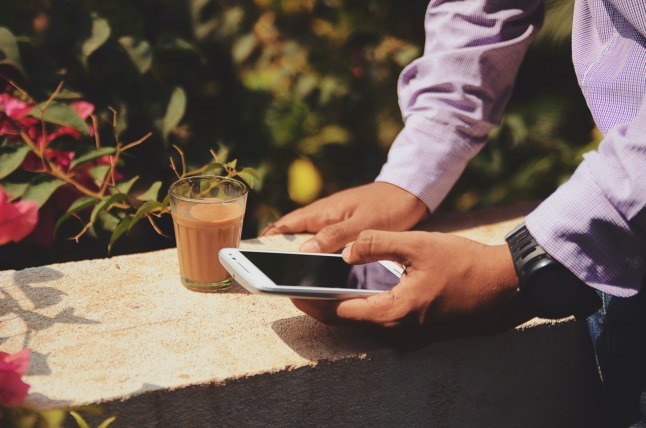BankID
To access any online public service in Norway, you’re going to need an electronic ID to verify your identity. You can use your electronic ID for everything from filing taxes to logging in to check your Covid-19 certificate.
You can check out our complete guide to electronic ID’s in Norway here.
In the meantime, we recommend you download the BankID app if you haven’t already. This is probably the best and fastest way to access your electronic ID without having to faff around with the fobs and pin-code letters other IDs require.
You will already need to have a BankID set up to use the app, so you may have to contact your bank to order a BankID If you don’t have one already.
Here you can see all the banks whose BankID are supported by the BankID app.
Too Good To Go
Norway is expensive, really expensive, so an app that can help you save money on tasty treats will undoubtedly come in handy, especially if you live in the big cities and towns.
Too Good To Go offers users great prices on food that stores, restaurants and bakeries would otherwise throw away. Doing your bit for the environment never tasted so good.
The app is already used by over a million Norwegians, and over 3,000 businesses are signed up Too Good To Go , which is available on IOS and Android devices.
Trumf
Another one your wallet will thank you for, this one is pretty effortless too.
Trumf is a bonus points scheme that helps you save while you shop. Not only that, you can choose how to redeem your points. You can have the cash value of your points deposited straight into your bank account, get money off of your next shop at a participating retailer or donate the cash value to a charity of your choice.
Trumf offers around 1 percent cashback on all purchases made at participating stores, sometimes more depending on where you are shopping and what you are buying.
One of the best things about Trumf is you can link your account straight to your debit card, saving any fussing about with QR codes and membership cards at the tills. Not only that, but you can also form a joint account with your significant other to store both your points together for a rainy day. Saving has never been so simple.
You can take a look at all the different places you can redeem your points here.
You can also take a look at our guide to loyalty schemes here to make sure you get the best bang for your buck next time you hit the shops.
You can download the app on both Apple and Android phones.
Helsenorge
The Heslenorge app is used to check coronavirus test results and access the Norwegian Covid-19 certificate.
If you plan to travel under the EU’s vaccine pass scheme, want to skip quarantine on your way back to Norway, or go to a big event such as a music festival, this will be a must-have.
Not only that but the app can be used for other functions, too, such as ordering prescriptions.
Having the app and certificate ready and easily accessible on your phone will help save you the time and effort of having to sign in and verify your identity with an electronic ID on the helsenorge.no website every time you need to access the health pass.
READ MORE: EXPLAINED: How to access Norway’s Covid-19 certificate
The app is available on both the Apple and Google Play stores.
Vipps
Vipps is Norway’s most popular money-sharing app, and for good reason.
It’s quick, easy to use, and there’s no charge for receiving or sending money.
Although DNB developed the app, customers of any Norwegian bank can use it.
READ ALSO: 11 million users, 330,000 shops: Nordic banks to merge mobile payment apps
One of the reasons Vipps is so easy to use and so popular is that to send someone money, you just need their phone number rather than their bank details.
You can download Vipps on your Android or iPhone.
Digipost
Digipost, if you hadn’t guessed already, is a digital letterbox where you can access important letters sent to you.
This is important because the post isn’t delivered directly to your door in Norway.
This makes Digipost an essential app to have on your phone to help save you the time and hassle of regularly visiting the post box.
More importantly, you can create an archive of important letters and documents.
Your digital mailbox is encrypted, and nobody, not even Digipost, will have access to it apart from you.
Digipost can help you save money too. In Norway, utility suppliers will often charge their customers for physical letters they send to them. If you switch to receive your bills and other post to Digipost, you can cut that cost out completely.
VY
Vygruppen is a state-owned Norwegian transport group. On the Vy app, you can plan your journey door to door using trains, busses, taxis, metro and boats. In addition to this, it will show you nearby scooters and city bikes for hire in the bigger cities.
Currently, you can book tickets with Vy and other companies such as Go-Ahead Nordic, SJ Nord and Ruter, and several smaller regional public transport companies. More regional companies will be coming to the app soon, meaning you will be able to prebook many more journeys.
You can also check out our rundown of essential travel apps in Norway.
Vy is available on the IOS app store and the Google Play store.
YR
It’s always important to check the conditions before heading out in Norway. The weather app used by the majority of Norwegians is YR. The forecasts are more accurate for Norway than the bog-standard weather applications that come with your phone. YR offers detailed forecasts wherever you are in Norway.



 Please whitelist us to continue reading.
Please whitelist us to continue reading.
Member comments